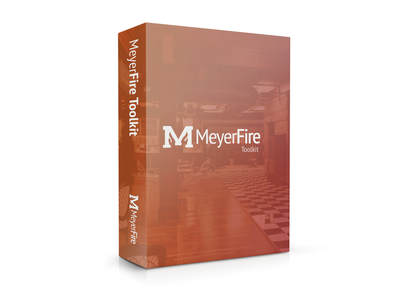|
I’m designing a wet system protecting storage utilizing 25.2K ESFR pendents.
I have some continuous obstructions greater than 2-ft wide (less than 4-ft wide) that require protection below the obstructions. It's under the 2018 IBC, and NFPA 13 2019 edition. The obstructions are mostly closely-spaced conduit groups. I would like to place the ESFR pendents within 3-inches to the side of the group with the deflector 6-inches below and have listed water shields installed for intermediate level rack type protection. Chapter 9 in NFPA 13 seems to allow this, but it is in a subsequent section dealing with obstructions greater than 4-ft wide. The verbiage and the annex figure do not clearly state the width of the obstruction. This protection scheme will be clearly denoted and submitted to the AHJ, but I want to get input if there are any potential issues with this design. Any questions, comments, or concerns will be greatly appreciated! Sent in anonymously for discussion. Click Title to View | Submit Your Question | Subscribe
8 Comments
Dan Wilder
6/30/2023 08:03:29 am
Section 9.5.1.3 says that the Sections 9.5.2 through 9.5.5 apply to all sprinkler types unless modified to be more restrictive.
Reply
Jesse
6/30/2023 08:10:39 am
Dan is spot-on, but I'd really emphasize trying to get the MEP to move those cable trays.
Reply
Glenn Berger
6/30/2023 08:20:04 am
To me the obstruction rules were clear before I started going into the field to view obstructions. With field experience, I have questioned the minimum requirements of NFPA 13 as it relates to obstructions (and other items).
Reply
Colin Lusher, PE
6/30/2023 08:50:10 am
No offense intended, but this is the reason people dislike AHJ's.... why make up your own rules?
Reply
Patrick Drumm
7/9/2023 12:37:54 pm
I agree with Colin. Also, it is very important to understand the legistlation regarding state building codes, fire codes, and their adoption of NFPA standards in your area. In a few states I am familiar with, the State Fire Marshall's Office is identified specifically as the AHJ and only their office can modify code requirements. There are other formal processes for interpretation including reviews by the state fire boards. City and town officials are directed to enforce the codes as they are written. That does not mean that I do not do my best to reach agreements with local officials, but if they were blatantly disregarding codes and making up their own rules it would be an issue that would need to be addressed with the state fire board.
Casey Milhorn
6/30/2023 09:20:42 am
I would also add that there was some fairly extensive recent testing done on obstructions to ESFR sprinklers and there were some very favorable results. I think they had another phase or two planned, and this was 1 or 2 years ago. Hopefully there should be some results coming out soon on this, if they haven't already. It will take some time for NFPA to review and adopt any changes of course.
Reply
Franck
7/3/2023 02:35:37 pm
Wasn’t it for obstruction at ceiling level from construction elements (beams, joists…) and position of sprinklers underneath (with possible greater distances than initially allowed), rather than obstruction below sprinklers ?
Reply
Chad
8/15/2023 11:21:29 am
May I add a small twist to this discussion? What if we are talking about elevated conveyors, such as in a large distribution center, where the dimension of the conveyor exceeds 4'?
Reply
Leave a Reply. |
ALL-ACCESSSUBSCRIBESubscribe and learn something new each day:
COMMUNITYTop June '24 Contributors
YOUR POSTPE EXAMGet 100 Days of Free Sample Questions right to you!
FILTERS
All
ARCHIVES
July 2024
PE PREP SERIES |
MeyerFire
- Blog
- Forum
-
THE TOOLKIT
- SUBMIT AN IDEA
- BACKFLOW DATABASE*
- CLEAN AGENT ESTIMATOR*
- CLOUD CEILING CALCULATOR
- DOMESTIC DEMAND*
- FIRE FLOW CALCULATOR*
- FIRE PUMP ANALYZER*
- FIRE PUMP DATABASE*
- FRICTION LOSS CALCULATOR
- HANGER SPACER*
- IBC TRANSLATOR*
- K-FACTOR SELECTOR*
- NFPA 13 EDITION TRANSLATOR ('19 ONLY)
- NFPA 13 EDITION TRANSLATOR ('99-'22)*
- LIQUIDS ANALYZER*
- OBSTRUCTION CALCULATOR
- OBSTRUCTIONS AGAINST WALL*
- PITOT CONVERTER
- PLUMBING FIXTURE COUNTS
- QUICK RESPONSE AREA REDUCTION
- REMOTE AREA ANALYZER*
- SPRINKLER DATABASE*
- SPRINKLER FLOW*
- SYSTEM ESTIMATOR*
- TEST & DRAIN CALCULATOR
- THRUST BLOCK CALCULATOR
- TRAPEZE CALCULATOR
- UNIT CONVERTER
- VOLUME & COMPRESSOR CALCULATOR
- WATER STORAGE*
- WATER SUPPLY (US)
- WATER SUPPLY (METRIC)
- UNIVERSITY
- PE Exam
- LOGIN
- PRICING
- OUR CAUSE

MeyerFire.com is a startup community built to help fire protection professionals shine.
Our goal is to improve fire protection practices worldwide. We promote the industry by creating helpful tools and resources, and by bringing together industry professionals to share their expertise.
MeyerFire, LLC is a NICET Recognized Training Provider and International Code Council Preferred Education Provider.
All text, images, and media Copyright © 2016-2024 MeyerFire, LLC
We respect your privacy and personal data. See our Privacy Policy and Terms of Service. The views, opinions, and information found on this site represent solely the author and do not represent the opinions of any other party, nor does the presented material assume responsibility for its use. Fire protection and life safety systems constitute a critical component for public health and safety and you should consult with a licensed professional for proper design and code adherence.
Discussions are solely for the purpose of peer review and the exchange of ideas. All comments are reviewed. Comments which do not contribute, are not relevant, are spam, or are disrespectful in nature may be removed. Information presented and opinions expressed should not be relied upon as a replacement for consulting services. Some (not all) outbound links on this website, such as Amazon links, are affiliate-based where we receive a small commission for orders placed elsewhere.













 RSS Feed
RSS Feed
